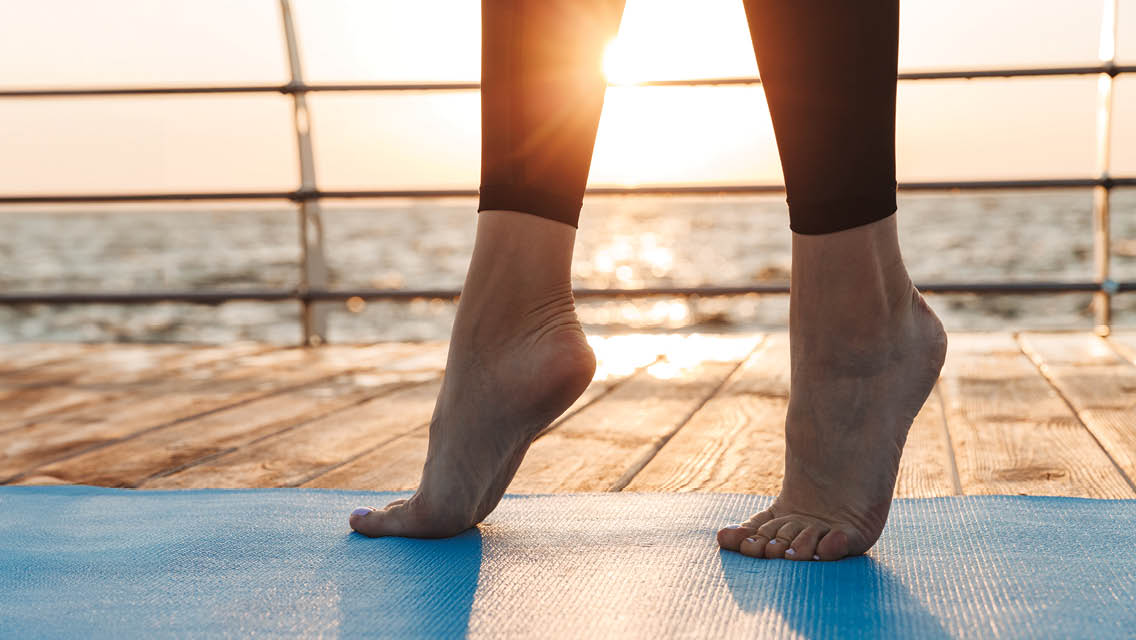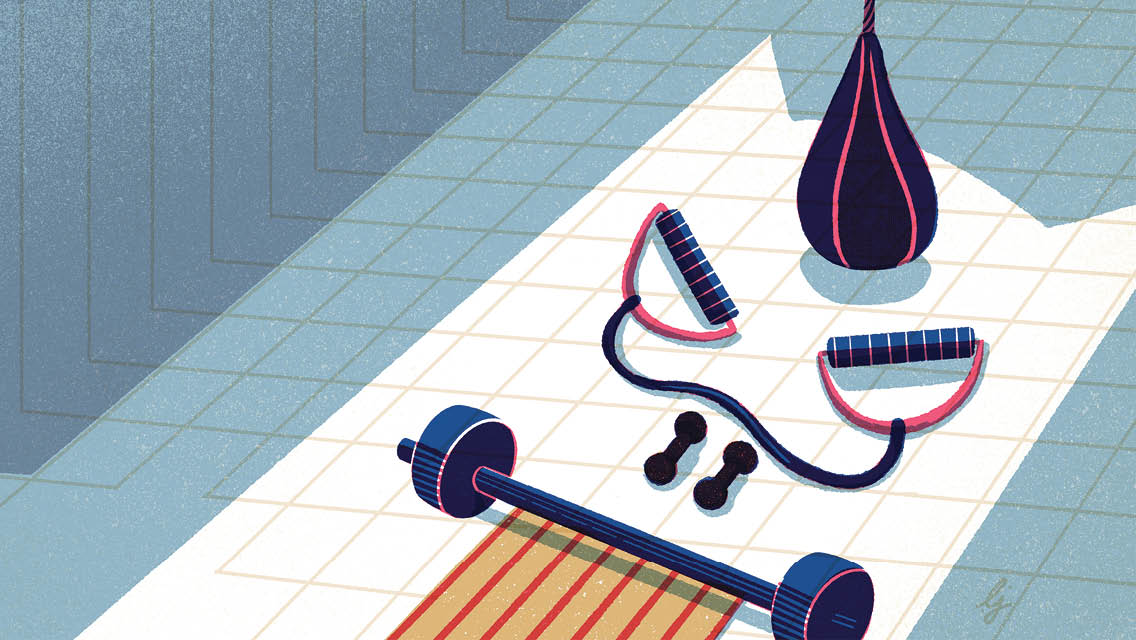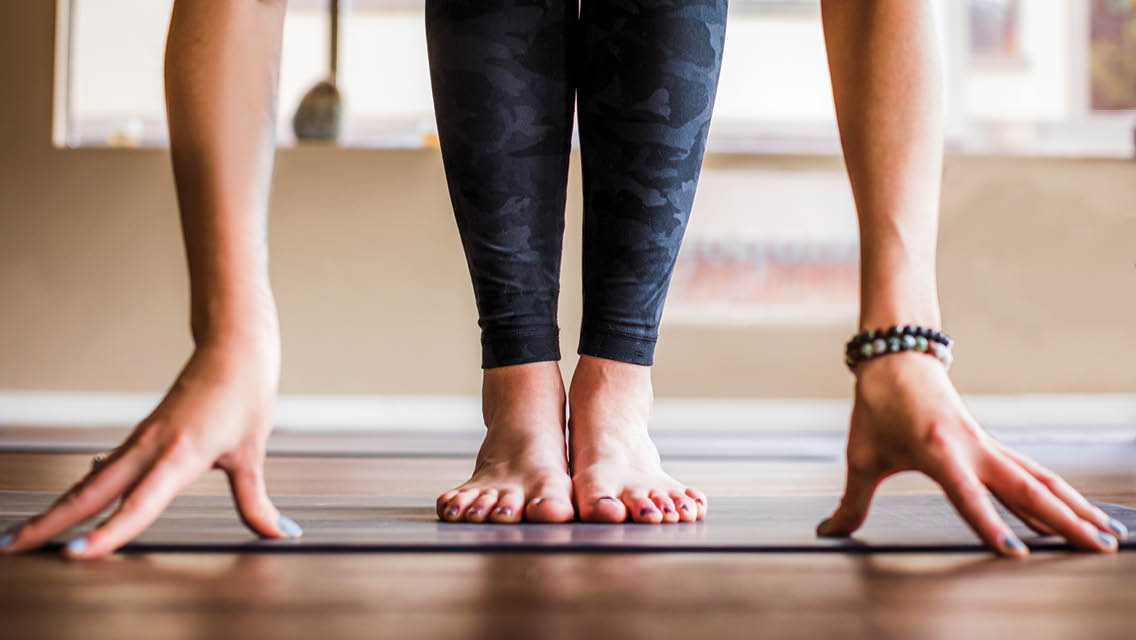The wobble began as soon as I lifted my heels, transitioning from utkatasana (chair pose) — a foundational, grounding yoga posture — to what yoga instructor Kate Counts calls a “soul dive.”
Following Counts’s cues via my computer screen, I shifted my weight forward onto the balls of my feet and allowed my heels to rise off the floor, torso pitching forward, arms extending behind me until my fingertips were reaching up to the ceiling. My body shivered, unconsciously seeking balance.
“The wobble is here,” Counts told our online class. “The wobble is part of the story. It’s always part of the story.”
And she’s right — the wobble wasn’t new. I’d experienced the quivering of my muscles and mind more times than I could count. I knew it from the gym: It’s the feeling of trying something new, working hard, getting tired. I also knew it from less controlled scenarios: the feeling of being caught off-guard when stepping onto black ice, for instance.
What was new, I realized as I teetered on the balls of my feet, was that I wasn’t running away from the wobble.
The momentary loss of balance wasn’t triggering me to instantly drop my heels, returning to the safety and comfort of feeling both feet firmly planted on my mat. I wasn’t afraid of what it might mean if I wasn’t strong enough to steady myself. Nor was I fighting the shake, tensing up so hard in my effort to stop the feeling of unsteadiness that I actually would lose my balance and fall.
The wobble — which Counts also refers to as the “tremor of truth” — is the body’s way of figuring out where it is. It’s the body trying to come back to itself. In that class, I wasn’t afraid of the truth of my body. I was there for it.
This revelatory class took place in November 2021, but Counts’s words came back to me recently while I was reviewing an article on balance training. Balance — the ability to stay upright without falling — is an essential physical and mental skill. Balance training has been shown to boost overall strength and mobility, increase resilience to injury, and benefit cognition, spatial awareness, and proprioception. All wonderful and important points, corroborated by our fact-checking and copyediting team.
But one comment made during the review process struck me. It pushed back on the framing of balance training as “wobble work” because our goal is to help people balance (i.e., remain stationary in a state of equilibrium), not to wobble (i.e., unsteadily rock).
Is that the goal of balance training? I wondered. To remain stationary? To achieve a state of equilibrium?
I reflected on this point for some time. I sought out the wisdom of other movement coaches, textbooks and training guides, and my own experience. Stillness might technically be a definition of balance, but balance training and its real-life functions seemed, to me, to be more nuanced.
My questioning approached a level of philosophizing that was beyond the scope of the balance-training article (which you can read at “How to Use Unstable-Surface Tools (USTs) for Balance Training“). But for the sake of my own training, I continued to contemplate the matter.
The most satisfying answer I’ve come up with so far — one that feels true to where I am in my training and life — is that balance training uses controlled instability to continually increase awareness of the limits of one’s stability.
In other words, the goal is to intentionally walk up to the line and come face-to-face with the wobble — Counts’s tremor of truth — and stay there, engaging with it, with curiosity. This is the challenge, the physical and mental stress, that builds our capacity to maintain stability.
Balance training, then, is so much more than training to be still. We train balance so we’re not afraid of being thrown off-balance. We train it so that states of imbalance, a part of life, don’t result in us falling over and not being able to get back up.
The wobble is not something fearsome to be avoided, or a foe to be pursued and overcome. The wobble is a guide, helping us find our way through the guaranteed moments of instability. Big or small, the wobble points us to our work.
“The tremor of truth wants to know that it is heard, seen, and believed,” Counts counseled in another class during which she set us shaking.
“I see you, wobble,” I repeat back to her through a muted screen, knowing the only ones who can hear me are my cats and, hopefully, my body. “I feel you.”





This Post Has 0 Comments